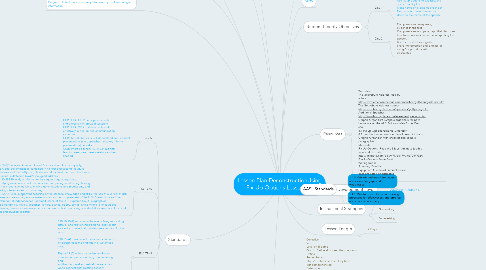
1. I have used categorizing, note making, and summarizing many times over the years. While I can certainly improve my proficiency in their use, I don't need to learn any of them.
2. I have used categorizing in my teaching. Students categorized character traits, conflicts, literary devices, etc. I have used Venn Diagrams, t-charts, and mind maps to have my students categorize information.
3. Strategies I've used in teaching
3.1. I have used notemaking in my teaching. I am a big fan of three column notes where students look for particular item in the text (column 1), record textual evidence (column 2), and then explain, elaborate, or make connections, etc (column 3). I also favor graphic organizers.
3.2. I have used summarizing in my teaching. My students practice choosing the best summary from a selection of summaries, practice writing summaries, and practice evaluating each other’s summaries.
4. Strategies I need to learn
4.1. Nonlinguistic representations
5. Purpose
5.1. The purpose of the lesson is to use fix-up options to determine the theme of a speech.
6. Blooms
6.1. Objective Verb Level on Bloom’s Obj. 1: Define all sixteen fix-up options. Define Remembering Obj. 2: Determine when they have lost comprehension. Determine Understanding Obj. 3: Practice metacognition and record when they apply the fix-up options. Practice Applying Obj. 3: Practice metacognition and record when they apply the fix-up options. Record Applying Obj. 4.: Interpret the theme of a speech using the information they gained while using fix-up options. Interpret Analyzing Obj. 5: Justify their interpretation using examples from the text. Justify Evaluating Obj. 6: Describe the process of using fix-up options. Describe Understanding Obj. 7: Share their interpretations in half-class groups. Share Creating
7. Standards
7.1. CCRS
7.1.1. CCRS ELA III.C.2 Participate actively and effectively in group discussions. CCRS ELA IV.B.2 Listen actively and effectively in one-on-one communication situations. CCRS Social Studies IV.C.1 Understand and interpret presentations (e.g., speeches, lectures, informal presentations) critically. CCRS Interdisciplinary I.D.1: Self-monitor learning needs and seek assistance when needed.
7.2. SS TEKS
7.2.1. 113.20.8(C) analyze Abraham Lincoln's ideas about liberty, equality, union, and government as contained in his first and second inaugural addresses and the Gettysburg Address and contrast them with the ideas contained in Jefferson Davis's inaugural address. 113.20.29B B) analyze information by sequencing, categorizing, identifying cause-and-effect relationships, comparing, contrasting, finding the main idea, summarizing, making generalizations and predictions, and drawing inferences and conclusions; 113.20.A2 (2) To support the teaching of the essential knowledge and skills, the use of a variety of rich primary and secondary source material such as the complete text of the U.S. Constitution and the Declaration of Independence, landmark cases of the U.S. Supreme Court, biographies, autobiographies, novels, speeches, letters, diaries, poetry, songs, and artworks is encouraged. Motivating resources are available from museums, historical sites, presidential libraries, and local and state preservation societies.
7.3. ELA TEKS
7.3.1. 110.20.10(A) summarize the main ideas, supporting details, and relationships among ideas in text succinctly in ways that maintain meaning and logical order; 110.25.(A) draws conclusions and summarizes or paraphrases the findings in a systematic way; Figure 19 (C) reflect on understanding to monitor comprehension (e.g., summarizing and synthesizing; making textual, personal, and world connections; creating sensory images); Figure 19 (E) (E) summarize, paraphrase, and synthesize texts in ways that maintain meaning and logical order within a text and across texts
7.4. Tech Apps TEKS
7.4.1. §126.16. Technology Applications, Grade 8 (3) Research and information fluency. The student acquires, analyzes, and manages content from digital resources. The student is expected to: (D) process data and communicate results. (4) Critical thinking, problem solving, and decision making. The student makes informed decisions by applying critical-thinking and problem-solving skills. The student is expected to: (A) identify and define relevant problems and significant questions for investigation; (D) use multiple processes and diverse perspectives to explore alternative solutions; (E) make informed decisions and support reasoning;
8. Reading Development Level
8.1. Advancing: Grades 7-8
9. Instructional Strategies
9.1. Categorizing
9.2. Notemaking
9.3. Summarizing
10. Lesson Length
10.1. 2 Days
11. Suzy
12. Michelle
13. AASL Standards
13.1. 1.4.3 Monitor gathered information, and assess for gaps and weaknesses.
13.2. 1.4.1 Monitor own information-seeking processes for effectiveness and progress, and adapt as necessary.
14. Resources
14.1. Websites: The Gettysburg Address read by actors http://www.americanrhetoric.com/speeches/gettysburgaddress.htm The Gettysburg Address speech http://www.historyplace.com/speeches/gettysburg.htm Additional Speeches http://www.historyplace.com/speeches/previous.htm Graphic Organizers (Graphic organizers for both books are on the ALA Editions Web Extras Web site.) 8.1 Fix-up Options Graphic Organizer 8.1 Teacher Resource—Completed Fix-up Options Graphic Organizer (with checklist and sample paragraphs) Materials: Fix Up Options: Read the Slides! Animoto (both a slow and fast side) http://animoto.com/play/W1Jb61RviJIcd70IfYY5zA Fix-Up Options PowerPoint Writing Rubric Summary Checklist Equipment:Overhead, Internet access, data projector, or interactive whiteboard.
15. Student-friendly Objectives
15.1. Day 1
15.1.1. Use fix-up options to explicate the speech line by line. Make notes on a graphic organizer. Record one or two phrases that describe the theme of the speech.
15.2. Day 2
15.2.1. Compose a summary using evidence in the text. Compose a second paragraph that describes how fix-up options helped in interpreting the speech. Use the checklist as a guide. Share interpretation and process of using fix-up options with classmates.

